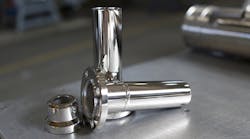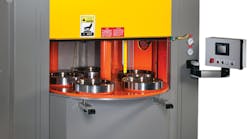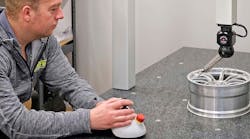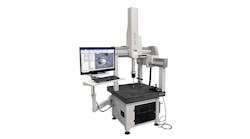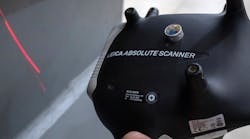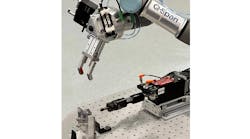Electropolishing is often the last step to finishing metal parts after manufacturing, and has numerous benefits that improve the parts’ performance and increase life span.
Electropolishing is a "reverse plating" process, removing the outer skin of metal instead of depositing metal on the surface. To accomplish this, a metal part is positively charged and submerged in a chemical bath. Then, current is applied to activate the process. The electric current along with the electrolyte pull metal ions off the surface of the part, leaving a smooth, shiny surface behind. Following treatment, metal parts have improved microfinish values, an ultraclean surface, and enhanced corrosion resistance.
However, some of these positive effects may be mitigated if parts are not properly packaged, both before and after the electropolishing is performed. While it may be tempting to save a few dollars by opting for cheaper packaging options, damage incurred during transportation can result in parts that need to be reprocessed or even replaced, ultimately costing much more than choosing the right packaging from the start.
Proper packaging for submitting parts — When parts are sent for electropolishing it is typically the last step in the manufacturing of metal parts. The components have already been carefully manufactured which usually involves other secondary operations such as deburring, grinding, mechanical polishing, and heat-treating. At this point, macro burrs have been removed, scratches have been polished out, and any adhesive or soap residue has been cleaned off in preparation for the final finishing operation. However, all that hard work can be undermined if parts are shipped without the proper protective packaging.
When metal parts are packaged so that they come into direct contact with one another, movement during transportation can easily result in scratches and nicks. Rather than being removed, these defects will only be highlighted by electropolishing, interrupting the smooth, clean shine of the finished product. Contact between parts may be permissible with simple wire forms or fasteners, but more complex and fragile parts definitely need to be more carefully packaged.
Each individual part should be wrapped in a material such as tissue paper, individually bagged, or kept in a cell tray that prevents contact with the other parts. Improperly packaged parts that arrive damaged will need to be sent back for reprocessing, and they may no longer be within the print specifications and need to be discarded.
Packaging parts after electropolishing — Even more important than the packaging pre-treatment is the packaging in which your newly electropolished parts will be transported after being processed. The requirements for clean and effective packaging vary depending on the type(s) of metal in use, as well as the applications for which the parts are intended to be used.
While some parts may be shipped back in the same containers they arrived in without harm, others will require clean, new packaging to safeguard the positive effects of electropolishing. Because electropolishing involves removing unwanted contaminants to return the material to its original mill condition, parts should be packaged in such a way that they don’t become re-contaminated, potentially negating this passive finish.
For metal parts that will be used in the medical, dental, pharmaceutical, and photonics industries, the level of cleanliness is an important consideration. Clean packaging is critical to ensure that the parts arrive sanitary and in excellent condition. If you are uncertain about the best packaging methods for the specific parts or type of metal you are using, consult with your electropolishing company. Many have different packaging options that can do the following:
• Prevent oxidation. Copper, brass, and some other metals will oxidize over time if not properly packaged, undergoing chemical changes as a result of exposure to oxygen in the environment. Sealed packaging from which the oxygen has been removed can ensure that the parts are in the same state when you go to use them as they were just after electropolishing.
• Provide a controlled environment. Even metals that aren’t prone to oxidation can be affected by different elements in the environment. Controlling these variables is of particular importance for parts to be used in medical settings, where strict standards are crucial to ensuring patient safety.
• Maintain cleanliness. For parts that require an ultraclean finish, vacuum packaging in a clean bench with a nitrogen purge is the ultimate protection from contaminants. .
Other packaging considerations — In addition to ensuring the integrity of the parts, there are other things to consider when packaging parts that undergo electropolishing. Depending on the final destination of the parts, specialty packaging may be required. For parts that go directly to the end users, individualized packaging or cell packaging may be necessary. Bulk packaging considerations should also be discussed and planned as shipping of bulk parts poses unique challenges.
Properly packaging parts pre and post electropolishing is key to optimal results from electropolishing. When deciding what type of packaging is necessary for your parts, it’s best to discuss with an experienced electropolisher to ensure that your packaging is in line with the final destination and application of your parts. Not doing so can greatly compromise the final finish and part performance. This can negate benefits from electropolishing and the part’s ultimate longevity and cycle life performance.
